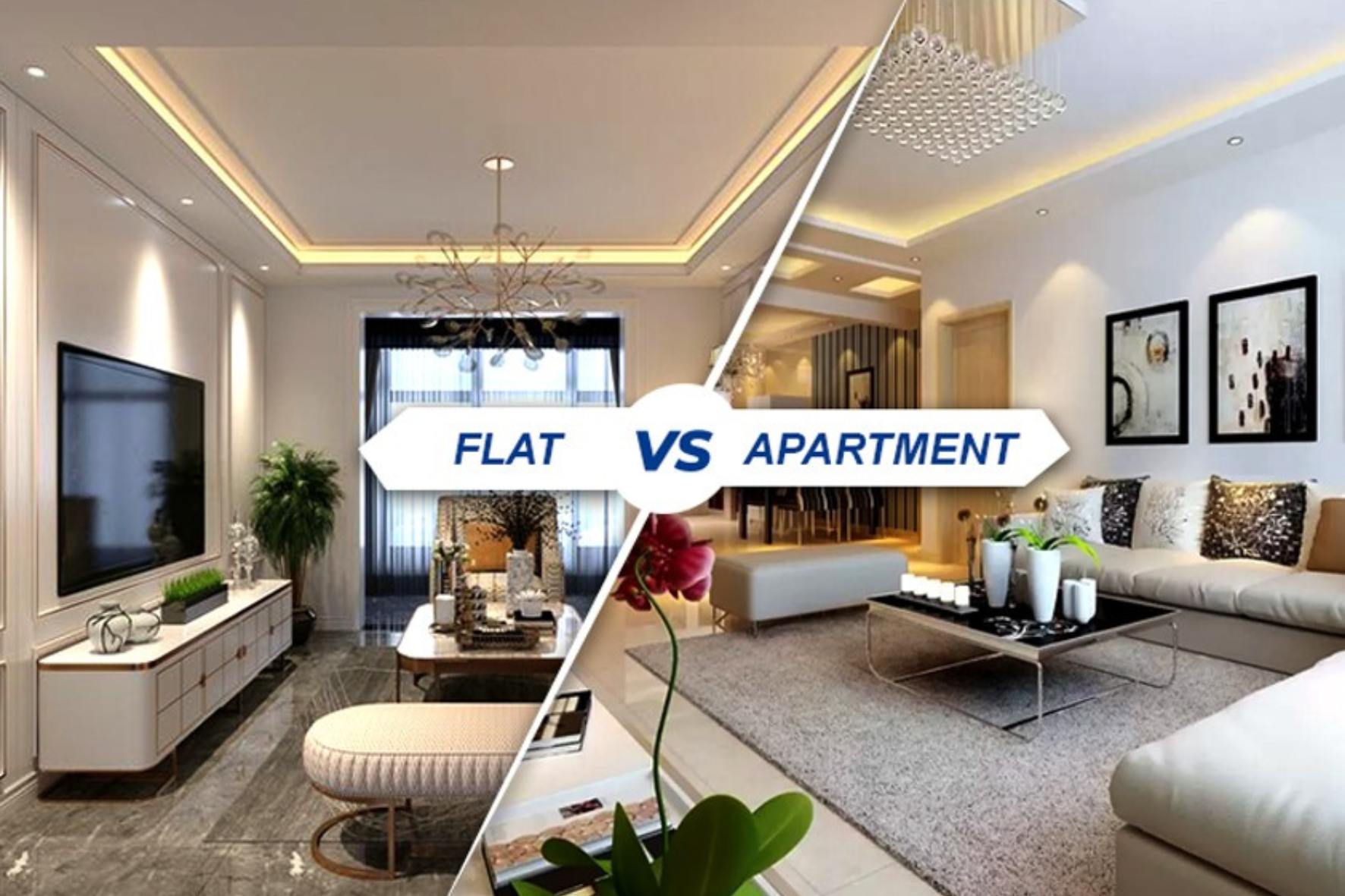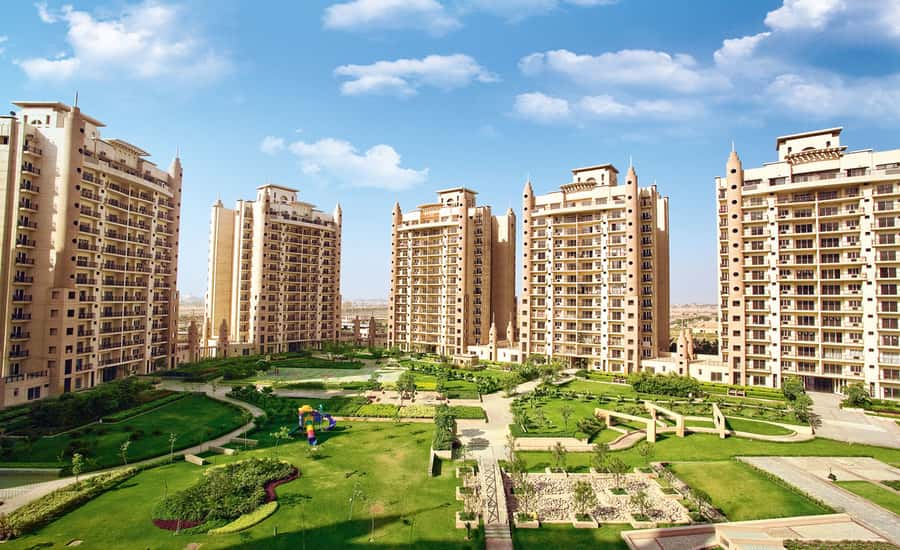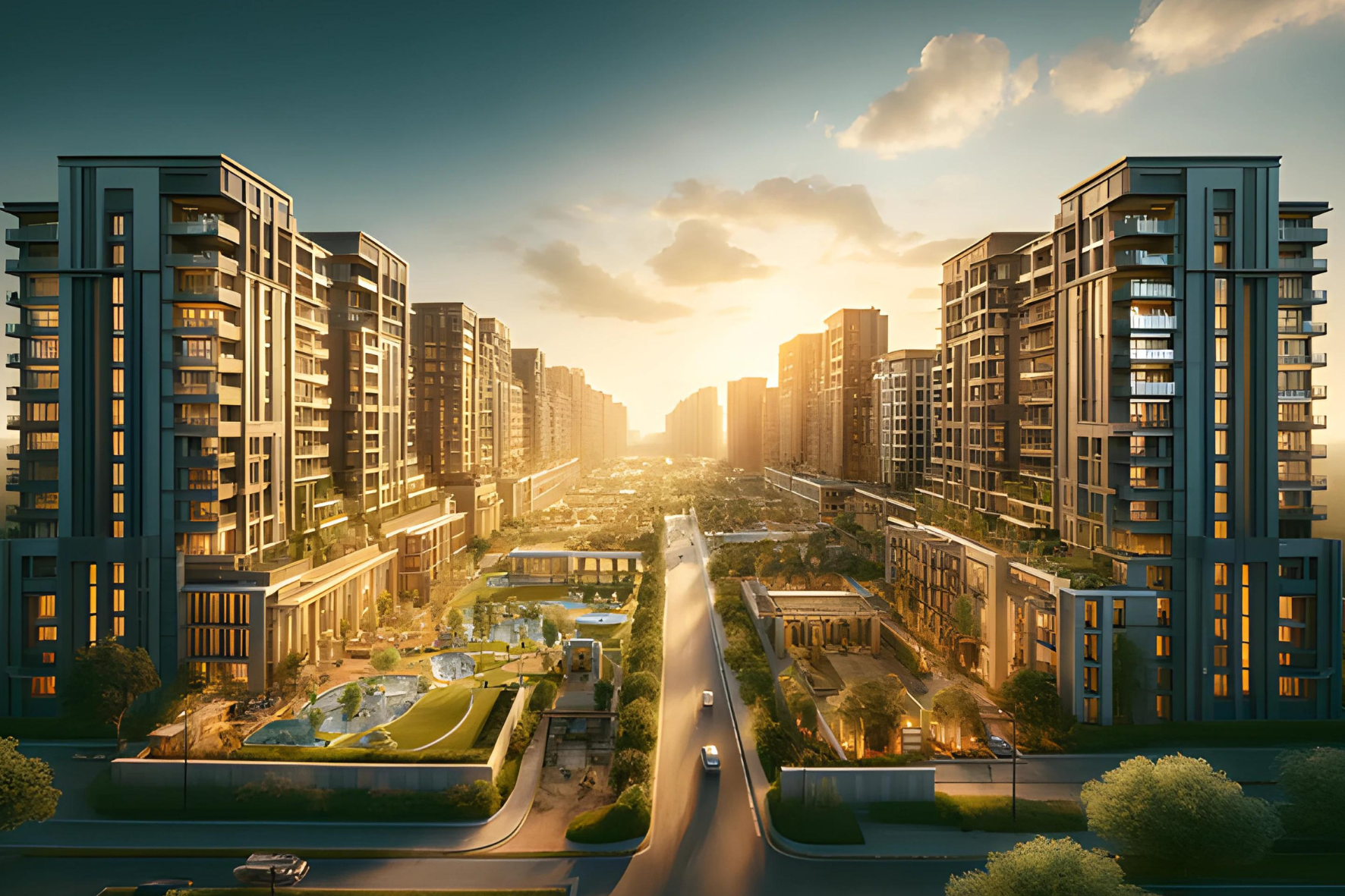What is the difference between Flat and Apartment | Flat vs Apartment
- 24 Sep 2023
The terms "flat" and "apartment" are often used interchangeably to describe residential units within multi-story buildings, but there are subtle distinctions between the two. These differences primarily stem from regional language variations and cultural norms. In many countries, particularly in Europe and parts of Asia, the term "flat" is commonly used to refer to a self-contained living space within a larger building. Flats typically have their own entrance, kitchen, bathroom, and living areas, offering a high degree of privacy.On the other hand, "apartment" is a more universal term used globally to describe similar living arrangements. It can encompass a wide range of configurations, from studios to penthouses, and may or may not include separate living spaces. Apartments are often associated with buildings specifically designed for residential purposes, with shared amenities like gyms or common areas.
Flats and apartments are often used interchangeably, but they can differ in some aspects. A flat typically refers to a single-level living space within a larger building, while an apartment often implies a multi-level dwelling in a complex. Apartments may offer more amenities like gyms and pools
Flats and apartments are often used interchangeably, but they can differ in some aspects. A flat typically refers to a single-level living space within a larger building, while an apartment often implies a multi-level dwelling in a complex. Apartments may offer more amenities like gyms and pools
Here are the differences between a flat and an apartment:
1. Terminology:
➢Flat: The term "flat" is commonly used in British English and some other parts of the world. It typically refers to a self-contained unit within a larger building or complex. Flats can be found in both residential and commercial buildings.
➢Apartment: "Apartment" is the more common term used in American English. It also refers to a self-contained living unit within a building, but it is primarily used to describe residential spaces.
2. Regional Usage:
➢Flat: The term "flat" is more prevalent in the United Kingdom, Europe, Australia, and some Asian countries.
➢Apartment: "Apartment" is widely used in the United States and Canada, as well as in many other parts of the world.
3. Building Style:
➢Flat: Flats are often associated with older or historic buildings, including Victorian-era townhouses or converted industrial spaces. They may have a more traditional or classic architectural style.
➢Apartment: Apartments can be found in a variety of building styles, including modern high-rise buildings, mid-rise complexes, and even older buildings that have been renovated or repurposed for residential use. The term "apartment" is often used in the context of larger, multi-unit residential complexes.
These differences in terminology and regional usage are important to understand when discussing housing options in different parts of the world. However, in practical terms, both flats and apartments refer to individual living units within a larger building or complex and serve the same purpose as residential spaces.
On the other hand, an apartment is a more general term used globally for a rented or owned residential unit in a multi-story building. While the core concept is similar, the choice of terminology may reflect local conventions and architectural styles, with "flat" often having a more traditional connotation, while "apartment" is more modern.
➢Flat: The term "flat" is commonly used in British English and some other parts of the world. It typically refers to a self-contained unit within a larger building or complex. Flats can be found in both residential and commercial buildings.
➢Apartment: "Apartment" is the more common term used in American English. It also refers to a self-contained living unit within a building, but it is primarily used to describe residential spaces.
2. Regional Usage:
➢Flat: The term "flat" is more prevalent in the United Kingdom, Europe, Australia, and some Asian countries.
➢Apartment: "Apartment" is widely used in the United States and Canada, as well as in many other parts of the world.
3. Building Style:
➢Flat: Flats are often associated with older or historic buildings, including Victorian-era townhouses or converted industrial spaces. They may have a more traditional or classic architectural style.
➢Apartment: Apartments can be found in a variety of building styles, including modern high-rise buildings, mid-rise complexes, and even older buildings that have been renovated or repurposed for residential use. The term "apartment" is often used in the context of larger, multi-unit residential complexes.
These differences in terminology and regional usage are important to understand when discussing housing options in different parts of the world. However, in practical terms, both flats and apartments refer to individual living units within a larger building or complex and serve the same purpose as residential spaces.
On the other hand, an apartment is a more general term used globally for a rented or owned residential unit in a multi-story building. While the core concept is similar, the choice of terminology may reflect local conventions and architectural styles, with "flat" often having a more traditional connotation, while "apartment" is more modern.
Flat vs Apartment: Lifestyle Considerations.
1.Community Feel
Flat: Flats in smaller buildings may offer a more intimate community feel, as there are fewer neighbors, fostering a sense of familiarity and closer interactions.
Apartment: Apartments in larger complexes may have a more diverse and transient population, which can provide a broader range of social interactions but may lack the same level of personal connection.
2.Cost
Flat: Flats in some regions may be more affordable due to their older or simpler construction, making them appealing to budget-conscious individuals or first-time homebuyers.
Apartment: Apartments can vary widely in price, with luxurious high-rise options offering upscale living experiences and price tags to match.
3.Maintenance Responsibility
Flat: In some cases, flat owners may have more responsibility for maintenance and repairs, as they own a portion of the building and its infrastructure.
Apartment: Maintenance responsibilities for apartments are often shared among tenants or managed by a property management company, providing convenience for residents.
4.Ownership Structure
Flat: Flats are typically associated with a leasehold or freehold ownership structure. Leasehold flats mean you have the right to live in the flat for a specific period, while freehold flats grant you full ownership of both the flat and the land it sits on.
Apartment: Apartments are often associated with a leasehold structure, where you have the right to live in the apartment but don't own the land or the building itself.
5.Architectural Style
Flat: Flats are commonly found in older buildings and may be more traditional in architectural style, often occupying a single floor of a larger building.
Apartment: Apartments can be found in a wider range of building types, including modern high-rises, mid-rises, and older buildings converted into multiple living spaces.
6.Amenities and Facilities
Flat: Flats may have fewer shared amenities and facilities, as they are usually in smaller, older buildings. Common areas like lobbies and gardens may be limited.
Apartment: Apartments, especially in larger complexes, tend to offer more extensive amenities such as gyms, swimming pools, and communal areas, making them attractive for those seeking a more comprehensive living experience.
Flat: Flats in smaller buildings may offer a more intimate community feel, as there are fewer neighbors, fostering a sense of familiarity and closer interactions.
Apartment: Apartments in larger complexes may have a more diverse and transient population, which can provide a broader range of social interactions but may lack the same level of personal connection.
2.Cost
Flat: Flats in some regions may be more affordable due to their older or simpler construction, making them appealing to budget-conscious individuals or first-time homebuyers.
Apartment: Apartments can vary widely in price, with luxurious high-rise options offering upscale living experiences and price tags to match.
3.Maintenance Responsibility
Flat: In some cases, flat owners may have more responsibility for maintenance and repairs, as they own a portion of the building and its infrastructure.
Apartment: Maintenance responsibilities for apartments are often shared among tenants or managed by a property management company, providing convenience for residents.
4.Ownership Structure
Flat: Flats are typically associated with a leasehold or freehold ownership structure. Leasehold flats mean you have the right to live in the flat for a specific period, while freehold flats grant you full ownership of both the flat and the land it sits on.
Apartment: Apartments are often associated with a leasehold structure, where you have the right to live in the apartment but don't own the land or the building itself.
5.Architectural Style
Flat: Flats are commonly found in older buildings and may be more traditional in architectural style, often occupying a single floor of a larger building.
Apartment: Apartments can be found in a wider range of building types, including modern high-rises, mid-rises, and older buildings converted into multiple living spaces.
6.Amenities and Facilities
Flat: Flats may have fewer shared amenities and facilities, as they are usually in smaller, older buildings. Common areas like lobbies and gardens may be limited.
Apartment: Apartments, especially in larger complexes, tend to offer more extensive amenities such as gyms, swimming pools, and communal areas, making them attractive for those seeking a more comprehensive living experience.
Conclusion
Flats and apartments typically refer to the same type of residential unit in many regions, but some use "flat" to describe a single-level unit, while "apartment" can imply a multi-level unit. The choice of term often depends on regional and cultural preferences.



.png)


.png)



